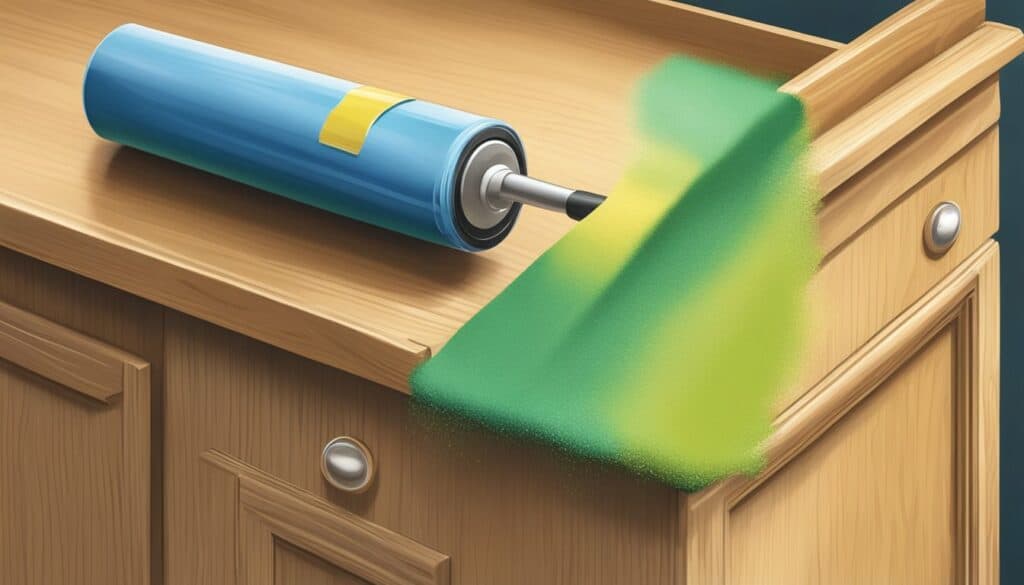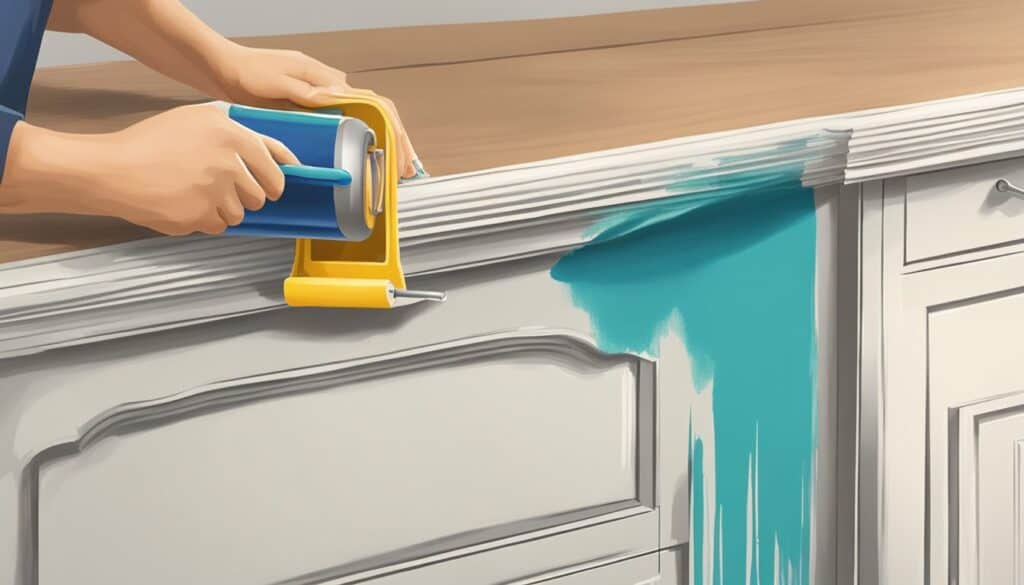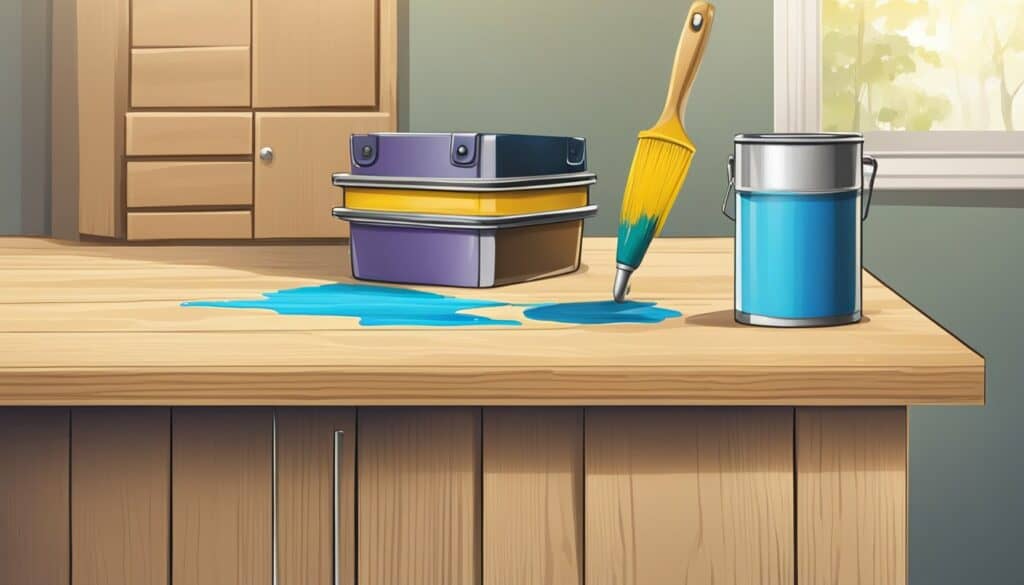Painting cabinets can be a daunting task, but it can also be a great way to update the look of a kitchen or bathroom without breaking the bank. One of the most important tools for this job is a paint roller. However, not all paint rollers are created equal, and choosing the wrong one can lead to a less than desirable outcome. So, what is the best paint roller for cabinets?

After conducting extensive research, it has been found that the best paint roller for cabinets is a 4-inch roller with a foam cover or, in some cases, a fabric cover with a thin nap. This size allows for better control of paint application in tight spaces and around trim, curves, and grooves that are common in cabinet designs. Additionally, foam covers provide a smooth, even finish, while fabric covers with a thin nap can help to minimize drips and splatters.
When selecting a paint roller for cabinets, it is also important to consider the type of paint being used. For example, enamel paints, urethanes, varnishes, primers, and stains work best with a FoamPRO Fine Finisher Roller.
This mini roller is made of high-quality materials to provide a lint-free finish and is ideal for achieving a professional look. Ultimately, choosing the right paint roller for cabinets can make a significant difference in the outcome of the project.
Understanding Paint Rollers

When it comes to painting cabinets, choosing the right paint roller is essential for achieving a smooth and even finish. Paint rollers consist of three main components: the roller frame, the roller cover, and the paint itself. Understanding each of these components is crucial to selecting the best paint roller for your cabinets.
The roller frame is the handle that holds the roller cover. It should be sturdy and comfortable to hold, allowing for easy maneuverability and control.
The roller cover is the part of the roller that actually applies the paint to the surface. It is important to choose a roller cover that is appropriate for the type of paint you are using, as well as the surface you are painting. Foam roller covers are great for cabinets, as they provide a smooth finish without leaving any brush marks or streaks.
When selecting a roller cover, it is important to consider the nap, or thickness, of the cover. For cabinets, a roller cover with a thin nap is ideal, as it allows for better control and precision in tight spaces. Additionally, foam roller covers are easy to clean and can be used multiple times, making them a cost-effective option.
Overall, choosing the best paint roller for cabinets requires careful consideration of the roller frame, roller cover, and the type of paint being used. With the right tools and techniques, painting cabinets can be a simple and rewarding DIY project.
Choosing the Right Paint

When it comes to painting cabinets, choosing the right paint is crucial. The wrong paint can lead to chipping, peeling, and an overall unsatisfactory finish. Therefore, it’s important to choose a paint that is specifically designed for cabinets.
One of the most important factors to consider when choosing the right paint is the type of paint. There are two main types of paint: oil-based and water-based. Oil-based paint is known for its durability and is often recommended for cabinets.
However, it can be more difficult to work with and has a longer drying time. Water-based paint, on the other hand, dries faster and is easier to clean up, but may not be as durable as oil-based paint.
Another important factor to consider is the quality of the paint. It’s important to choose a high-quality paint that will provide a smooth and durable finish. Look for a paint that is specifically designed for cabinets and has a hard, durable finish.
When it comes to choosing the right color, it’s important to consider the overall design of the room. Neutral colors such as white, gray, and beige are popular choices for cabinets as they provide a timeless and classic look. However, bold colors such as navy blue or emerald green can add a pop of color and create a statement piece in the room.
Overall, choosing the right paint for cabinets involves considering the type of paint, the quality of the paint, and the color of the paint. By taking these factors into consideration, you can ensure that your cabinets will have a beautiful and long-lasting finish.
Why Use a Paint Roller
When painting cabinets, using a paint roller can be a game-changer. Not only does it save time, but it also provides a smooth and even finish. Here are some reasons why using a paint roller is beneficial:
- Efficiency: Using a paint roller is much quicker than using a brush. With a roller, you can cover a larger area in less time. This is especially useful when painting cabinets, which can be time-consuming.
- Smooth Finish: A paint roller is designed to provide a smooth and even finish. This is important when painting cabinets, as you want them to look clean and professional. A roller also helps to avoid brush marks and streaks, which can be unsightly.
- Controlled Application: With a paint roller, you have more control over the amount of paint you apply. This is especially useful when painting cabinets, as you want to avoid applying too much paint and causing drips or runs.
- Versatility: Paint rollers can be used with a variety of paints, including latex, oil-based, and even stains. This means you can choose the type of paint that best suits your needs and achieve the desired finish.
When it comes to painting cabinets, choosing the right paint roller is crucial. A 4-inch roller is ideal, as it allows for better control in tight spaces and can navigate around curves and grooves. Additionally, using a roller with a nap (the thickness of the roller cover) of 1/4 inch or less will provide a smoother finish.
Overall, using a paint roller is a great choice when painting cabinets. It’s efficient, provides a smooth finish, and gives you more control over the application. Just be sure to choose the right roller for the job to achieve the best results.
Achieving a Smooth Finish
When it comes to painting cabinets, achieving a smooth finish is essential to achieving a professional-looking result. A smooth finish creates a polished and refined appearance that can elevate the overall aesthetic of a room. However, achieving a smooth finish can be a challenge, especially when using a roller.
To create a smooth finish, it is important to choose the right roller for the job. Foam rollers are a popular choice for painting cabinets because they provide a sponge-like texture that creates a smooth surface. They work best with latex or water-based paint because these types of paint are thinner and more easily absorbed by the sponge-like quality of the foam roller.
In addition to choosing the right roller, there are other tips and tricks that can help achieve a smooth finish. One important tip is to use high-quality paint. Cheaper paints may contain fillers that can create a rough surface, making it difficult to achieve a smooth finish. Using a high-quality paint can help ensure that the paint goes on smoothly and evenly.
Another important tip is to sand the cabinets before painting. Sanding helps to create a smooth surface by removing any bumps or imperfections that may be present. It also helps the paint adhere better to the surface, ensuring a more even coat.
Finally, it is important to use the right technique when applying the paint. When using a roller, it is important to use long, even strokes to create a smooth surface. Rolling too quickly or using too much pressure can create a rough surface, which can be difficult to correct once the paint has dried.
In summary, achieving a smooth finish when painting cabinets requires the right tools, techniques, and materials.
Choosing the right roller, using high-quality paint, sanding the surface, and using the right technique can all help to create a smooth, professional-looking finish that will enhance the overall aesthetic of the room.
Preparation and Application
When it comes to painting cabinets, preparation is key to achieving a smooth and professional finish. The first step is to remove all cabinet doors and hardware, and clean the surfaces thoroughly with soap and water. Any grease or grime should be removed with a degreaser, and the cabinets should be sanded lightly to create a rough surface for the paint to adhere to.
Once the cabinets are clean and dry, it’s time to apply the first coat of paint. A paint tray is a useful tool for this task, as it allows you to load the roller with paint evenly and avoid drips.
A 4-inch roller with a foam or microfiber cover is ideal for cabinets, as it allows for precise application in tight spaces and around trim and grooves.
When applying the paint, it’s important to use long, even strokes to avoid streaks and uneven coverage. Start at the top of the cabinet and work downwards, being careful not to overload the roller with paint. If necessary, a brush can be used to reach any areas that the roller cannot.
After the first coat has dried completely, a second coat can be applied using the same technique. It’s important to wait for the paint to dry completely between coats, to avoid smudging or damaging the previous coat. Once the second coat is dry, the cabinet doors can be reinstalled and the hardware replaced.
Overall, painting cabinets can be a time-consuming and labor-intensive task, but with the right tools and techniques, it can be a rewarding DIY project that can transform the look of a kitchen or bathroom.
Conclusion
Choosing the right paint roller is crucial when it comes to painting cabinets. Using a quality paint and the right roller can make all the difference in achieving a smooth and professional finish.
Foam rollers are great for smooth surfaces and can be used with both oil-based and water-based paints. They are also easy to clean and can be used multiple times. Fabric rollers, on the other hand, are better suited for rough surfaces and can provide a thicker coat of paint.
When selecting a roller, it’s important to consider the nap, or thickness, of the roller cover. A shorter nap is better for smooth surfaces, while a longer nap is better for rough surfaces. It’s also important to choose a roller that is the right size for the job at hand.
Ultimately, the best paint roller for cabinets will depend on the type of paint being used and the surface being painted. By choosing the correct roller and using a quality paint, anyone can achieve a professional-looking finish on their cabinets.
Achieving a smooth finish on your cabinets is easy with the best paint roller – and VIP House Services can help you find it. Our team of experts specializes in kitchen remodeling and can help you choose the perfect paint roller for your cabinets.
And with a free estimate, you can start planning your kitchen renovation project without any upfront costs. Don’t let a bumpy finish ruin your kitchen – let VIP House Services help you achieve a flawless look.
